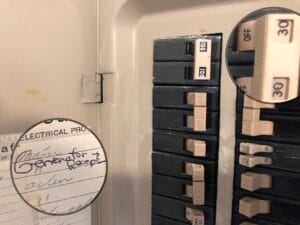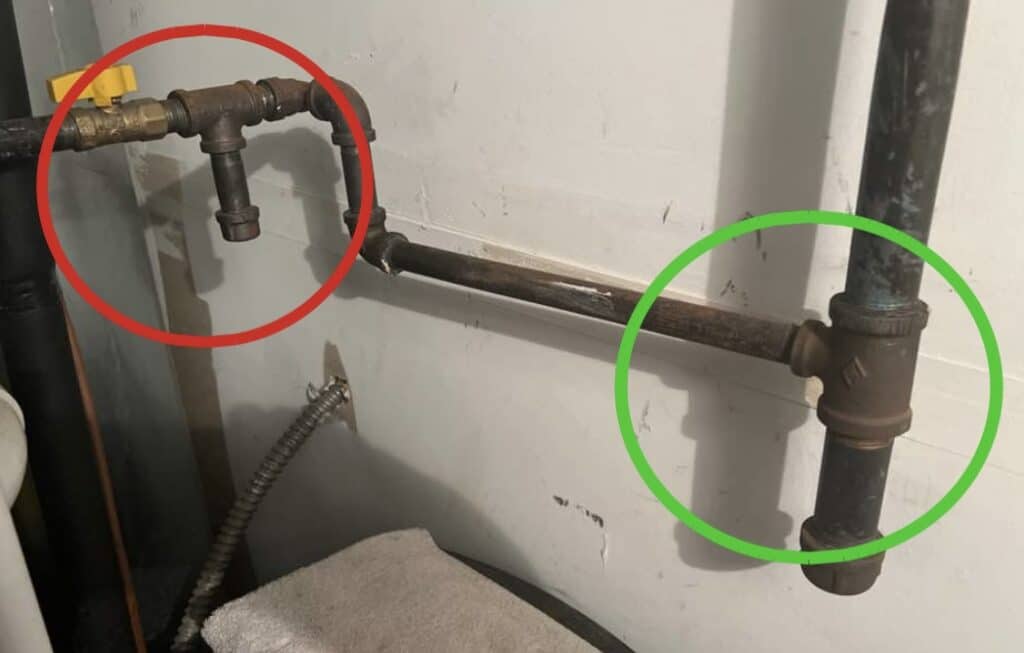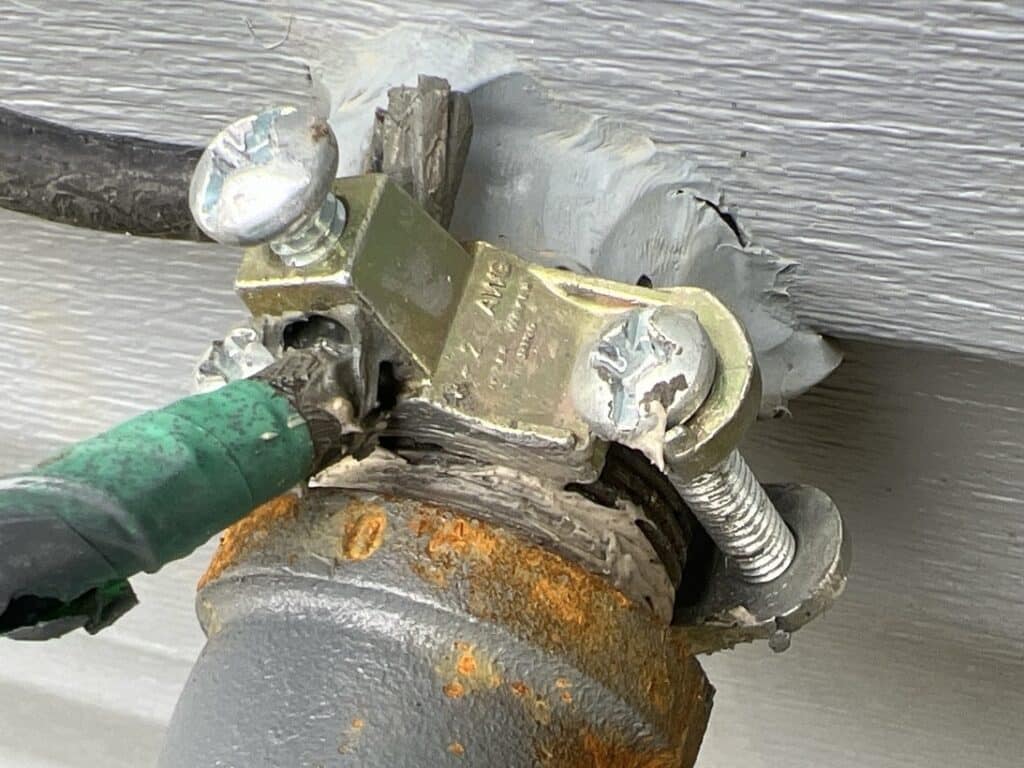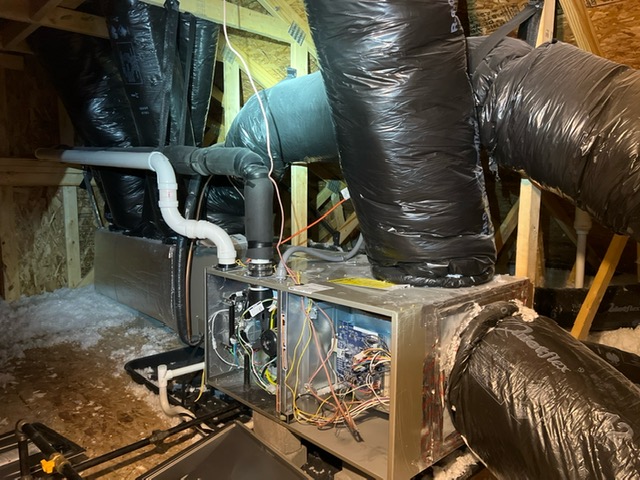W ith global weather patterns changing power outages are becoming widespread, outages that were localized are now becoming citywide as hurricanes, flooding and wildfires threaten communities.
ith global weather patterns changing power outages are becoming widespread, outages that were localized are now becoming citywide as hurricanes, flooding and wildfires threaten communities.
The answer is a standby generator.
There are the permanent types that are installed on a pad outside and the portable type that is generally stored in the garage then hauled outside and plugged into the house electrical system in times of emergency. Using the portable type with a power cord directly to the refrigerator or a few lights is not an issue, using them to power your house may be. Incorrectly installed, a small generator can become a killer machine, the “electric chair” of utility workers and possibly the home’s occupants.
This electric panel we were inspecting looked perfect with the cover off, all the wire sizes matched the breaker size; perfect and it was time to put the cover back on. The top right breaker was in the off position (unusual), on the door of the panel box it was identified as being for a backup generator. Looking outside there was a large plug to connect the generator power cord and it was immediately clear that this was a “DIY setup” for powering the whole house from a portable generator.
What we had found was unbelievably dangerous and absolutely forbidden. It is illegal to have a set up where power can be fed to the panel from two sources at the same time, the main breaker and the generator feed breaker must be linked together so that turning off the main breaker turns on the generator breaker or visa versa. In the set up we had found, the electrical power would go out so the panel would be dead.
The homeowner would power up their small 6000 watt generator plug it into the exterior receptacle and turn on the 220 volt breaker they had installed and power up the breaker panel sending power throughout the whole house and at the same time SEND POWER back out through the electric meter, up to the pole and on through the closest transformer boosting the voltage to 13,000 volts. Electricity at this level will kill a utility linesman in the process of repairing the downed power lines.
If power is restored while the generator is connected and running the incoming 240 Volts from the transformer will collide with the 240 Volts from the portable generator destroying it in a matter of seconds and most likely the fuse in the utilities transformer will blow, shutting down power to all the neighbors houses.
Equally, the exterior plug that was installed to connect the generator will become live if the generator breaker is energized while there is power to the panel from the utility. Anyone touching this plug would be electrocuted.
NOTE:
*Wiring for a generator requires a transfer switch, which allows power from only one source; the utility OR the generator.
*Professional installation is strongly recommended and a permit from the city or county required.
*Do not back feed a generator into the homes electrical system.
*Never run a generator anywhere inside a building including the garage due to potential for carbon monoxide poisoning.







Leave a Reply